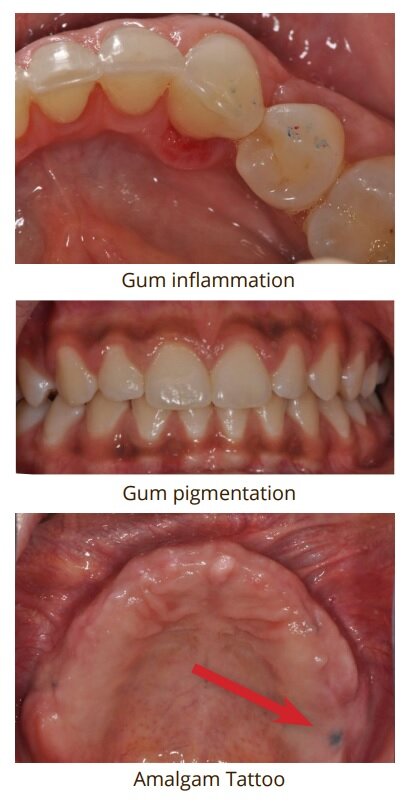MOUTH LESIONS: COLORED AREAS
Mouth Lesions (or coloured areas) can be red/purple, brown or black.
They are more common in people over 60 and are typically located either under the tongue or at the back of the roof of the mouth
Frequently Asked Questions
1. What causes Colored Areas?
Red/Purple Areas are most often an indication of inflammation, infection, trauma or surface blood vessels. Blood conditions such as thrombocytopenia and amyloidosis can create red/purple areas in your mouth. People who smoke, have dry mouth or have a weakened immune system are more susceptible to yeast infections that cause inflammation and may appear as reddened areas with a white covering. Oral infections may be reddened and appear raised when compared to the surrounding tissue. People with bite problems, broken teeth or an ill-fitting denture may have traumatized or inflamed tissues that look red and even ulcerated. Blood vessels tend to become more apparent in your mouth as you age and they show up as red/dark purple bumps.
Brown Areas are usually caused by pigmentation in the gums or lining of your mouth. Ethnic populations with darker skin tones tend to have these brown areas and are a variation of normal mouth tissue appearance.
Black Areas are usually benign “amalgam tattoos” and occur when gums or tissues are traumatized during the placement or removal of silver fillings. Amalgam tattoos do not grow or change over time and do not pose a health risk. However, black areas can indicate a more serious condition, so it is important to have your dentist determine what has caused this darker coloration.
2. What is my role in managing Colored Areas?
Note the size, location and duration of the area. Determine if it is painful and recall if you may have traumatized the area. If a colored area persists beyond one week, have it examined by your dentist.
3. What will happen if I do nothing about Colored Areas?
Although some colored areas are normal variations of mouth tissue, many indicate underlying disease processes. If your colored area is caused by inflammation or infection, it will likely get worse as time goes on. If it is caused by ongoing trauma, it will also worsen with time. In the rare event that it is cancer, it can lead to disfigurement or death if not diagnosed and treated in a timely manner.

